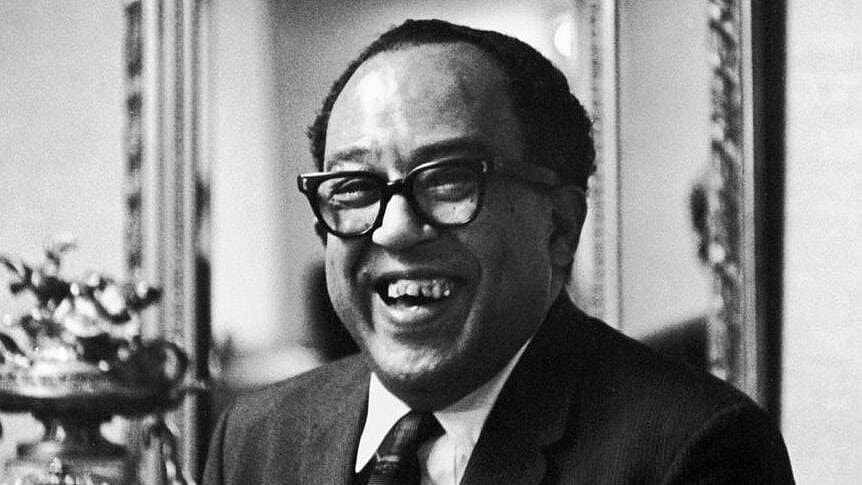What better way to kick off Black History Month than with celebrating the “people’s poet,” Langston Hughes on his birthday?
His passionate, thought-provoking, yet accessible words were always about uplifting and affirming Black life, not just in America, but all over the world. He delved into intersectionality before the term existed with his poem “Mother to Son” and his satirical Simple series provided a refreshing look at life for the everyday man.
Hughes is well-documented as one of the most powerful voices to come out of the Harlem Renaissance movement. More than likely, you had to memorize and recite at least one of his poems, read one of his novels or acted out one of his plays at some point in your academic life. But Hughes was an interesting guy whose eclectic nature has remained an enduring part of his legacy and that includes the details of his final resting place.
When describing himself in the book, “Twentieth Century Authors: A Biographical Dictionary,” Hughes once wrote, “I am unmarried. I like ‘Tristan,’ goat’s milk, short novels, lyric poems, heat, simple folk, boats and bullfights; I dislike ‘Aida,’ parsnips, long novels, narrative poems, cold, pretentious folk, buses and bridges.”
Check out these other little-known facts about Harlem’s Poet Laurette.
Midwestern Roots and a Mexican Awakening
Langston Hughes is most closely associated with his beloved Harlem, the community where he spent the majority of his adult life. However, Hughes was not a native “New Yawka,” born in the Big Apple.
The poet came into the world in 1902 in Joplin, Missouri. Growing up, he bounced between various Midwestern towns in Kansas, Illinois, and Ohio. In his formative years, he also lived with his father for some time in Mexico. He had a complicated relationship with his dad and their opposing views on loving and accepting Blackness, further shaping a young Hughes’ understanding of the world as a Black man.
Prodigy Poet
“The Negro Speaks of Rivers” is one of Hughes’ most famous poems and he wrote it when he was just 17 years old. He was on a train headed to see his father when the words came bubbling up. He jotted them down on the back of an envelope.
While still a teen, Hughes was creating work that would form a large part of his legacy for decades to come. That is in stark contrast to some young adults today whose thoughtless, embarrassing “creative output” on social media often results in their expulsion, employment loss, and sometimes prison.
Ashes at the Schomburg
A simple headstone in a cemetery would not due for Brother Hughes. When he died of complications from prostate cancer surgery in 1967 at 65, the poet’s ashes were interned under the foyer floor of the Schomburg Center for Research in Black Culture located in Harlem of course. A cosmogram called “Rivers” serves as the ornate covering for Hughes’ ashes. Quotes from his famous poem “The Negro Speaks of Rivers” dot the design. In 1991, when the Schomburg celebrated what would have been Hughes’ 89th birthday, libations were poured as poets Amiri Baraka and Maya Angelou famously danced atop the poet’s final resting place.

The Harlem house where he lived out his final years is now under the stewardship of the I, Too, Arts Collective—a non-profit organization that provides programming and event space for emerging writers.


